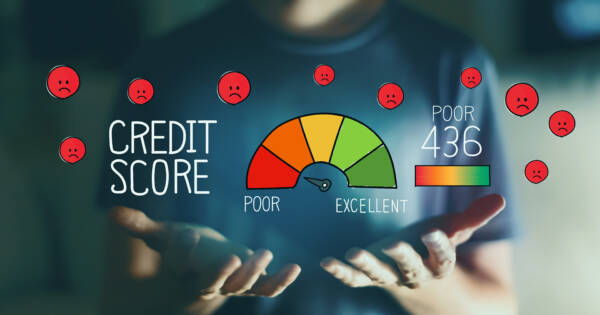Managing high-interest credit card debt can feel overwhelming, especially when balances are spread across multiple accounts. A balance transfer may offer meaningful relief by shifting debt to a lower-interest card, potentially reducing how much you pay overall. Yet not every offer delivers real savings. Fees, introductory terms, and repayment timelines all play a major role in determining value. Understanding how balance transfers work (and when they make financial sense) is key to making a confident decision.
Understanding Balance Transfers
A balance transfer can be a useful strategy if you have multiple credit cards and you’re carrying a sizable balance on a relatively high-interest account. Balance transfers allow you to shift that debt from a higher-interest card to a card with lower rates. On paper, it appears to be a straightforward path to significant savings.
However, there are caveats to keep in mind. Many credit cards levy additional fees on the transferred balance, which can erode its value as a money-saving tool. You’ll have to do some math to determine whether an individual offer is worth it. This requires evaluating a lot of different factors, some of which come with moving parts. To help you, here’s a guide on how to determine when you should consider a balance transfer offer and when it’s better to decline.
How Balance Transfers Work
Doing a balance transfer requires a few basic preconditions. You will need the following.
- At least two credit cards, one of which has a lower interest rate than the card on which you’re carrying a balance. Or:
- A higher-interest credit card and an offer to open a new credit card with a lower rate.
- A balance on the higher-interest card that you cannot currently pay off.
Here’s another important note to consider. The card to which you intend to shift your higher-interest debt must explicitly allow you to transfer existing balances. Not all cards accept balance transfers.
Most people elect to transfer balances to new credit card accounts opened specifically for this purpose. These cards are informally known as “balance transfer cards.” They usually come with an extended introductory low-interest or no-interest period. However, you don’t necessarily need a new card for this. The math can still work out in your favor as long as the card to which you’re shifting the balance has a lower interest rate than the one currently carrying the balance.
Performing a Balance Transfer
Assuming you’ve got these things in place, here’s how the balance transfer process breaks down.
Initiate the Transfer Request
You’ll need to submit a formal request to the bank or credit card company that issued the account to which you want to transfer your balance. You can do this in four ways — by using specially issued balance transfer checks, through online banking, by phone, or by direct deposit. Your financial institution will inform you of your options if you’re not sure which methods are supported.
Make the Transfer
Specify the amount of money you want to transfer from the higher-interest card to the lower-interest card. If possible, transfer all of it.
Monitor Your Accounts
Balance transfers usually take anywhere from one to three business days to complete. Keep an eye out. Contact your financial institution if it doesn’t post after three days.
Perform a Final Check
Check your balance transfer card to ensure the transferred funds are posted on the new account as expected. Make sure the balance is gone from its previous card, too. Make note of your new payment obligations, including minimum payment amounts, dates, deadlines, and grace periods.
Note that the debt you are shifting to the balance transfer card does not have to be in your name. You can assume debts accrued by your spouse, partner, children, or any other authorized person. However, most credit card providers prohibit balance transfers within themselves. So you probably can’t, for example, transfer the balance of your spouse’s Amex card to a new Amex card in your own name.
Doing The Math: A Simple Example
Let’s work through the numbers using a straightforward example. In this example, assume you have the following situation.
- $4,000 in credit card debt on an account with an 18% annual interest rate.
- A new balance transfer card with a 0% introductory interest rate for 12 months and a 5% balance transfer fee.
- A post-introductory interest rate of 15% after the 12-month period.
- $250 per month to put toward paying down the debt.
First, use a debt calculator tool to determine how long it would take you to pay off your $4,000 debt at 18% interest with your $250 per month. Running these numbers, you’ll find it will take you 19 months to clear the debt, at a total cost of $4,608.17.
Next, use a balance transfer calculator to do a comparison. Using the same numbers, you will be debt-free after 17 months at a total cost of $4,232.44. In this case, it’s absolutely worth it to make the transfer.
Caveats and Other Things to Know
The previous example used simple, straightforward numbers. Many balance transfer cards carry more complex terms and conditions. For instance, some place floors and ceilings on the amount of money eligible for the transfer. That can impact the outcome of your calculations. Other balance transfer cards come with annual fees, which you will also have to factor in if they apply. Saving $250 on interest barely helps if your new card comes with a $195 annual fee.
To get the most out of your balance transfer, follow these tips and suggestions.
- Try to pay off the entire debt during the low-interest or no-interest introductory period, if possible. This could save you hundreds or thousands of dollars in the long run
- If you can’t clear the whole debt, try your best to use the low-interest grace period to save money and get your personal finances in order.
- Always read and understand the terms and conditions associated with the card you’re transferring the balance to.
Beware of this nasty surprise. Some balance transfer cards will apply the regular interest rate to the entire balance if you haven’t paid it off completely when the introductory interest period ends. This can completely nullify your cost savings or ding you for even more money in the long run.
When to Say Yes, and When to Say No
Every situation is unique, but in general, a balance transfer is a good idea if these conditions apply.
- Your calculations show that you will save a significant amount of money.
- Your income and expenses are stable.
- You are sure you’ll be able to make regular monthly payments of at least the sum you used during your calculations.
Alternatively, you may be better off foregoing the balance transfer offer if these things are true.
- The balance transfer card levies high annual fees.
- You cannot absolutely commit to making the same monthly payment you are using in your calculations.
- Your income and/or expenses are not stable or predictable.
- The new card’s terms and conditions allow it to retroactively apply regular interest rates to balances you were carrying during the grace period.
- The difference between the two cards’ respective interest rates is not big enough to make it worth your while after factoring in all fees and charges.
Balance transfers can be a great money-saving tool. They may also help you improve a low credit score or maintain a strong score in the long run — but only if you use them right. In the short term, you might actually see your credit score dip due to a hard credit inquiry and a change in your credit utilization. Do your due diligence, proceed with caution, and always use new credit sources wisely. Finally, remember not to close your balance transfer card after paying off the debt, as this can negatively impact your credit score.








